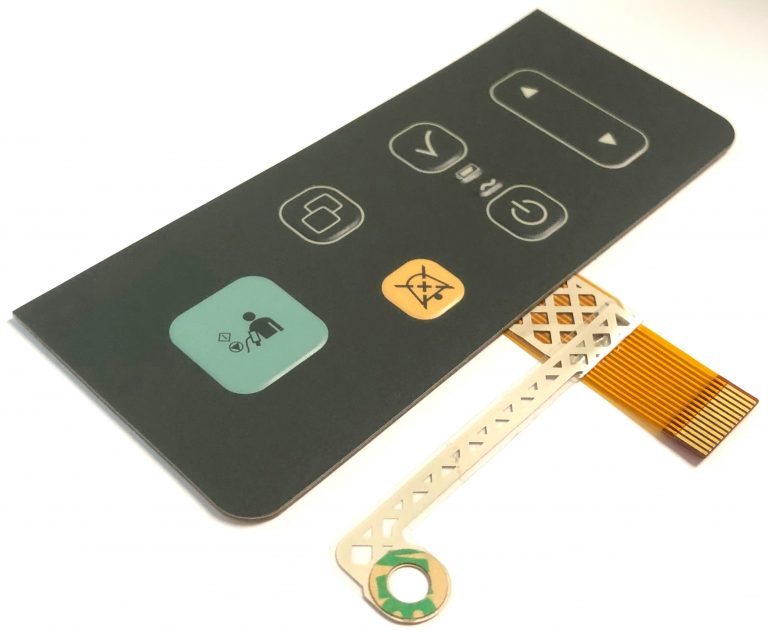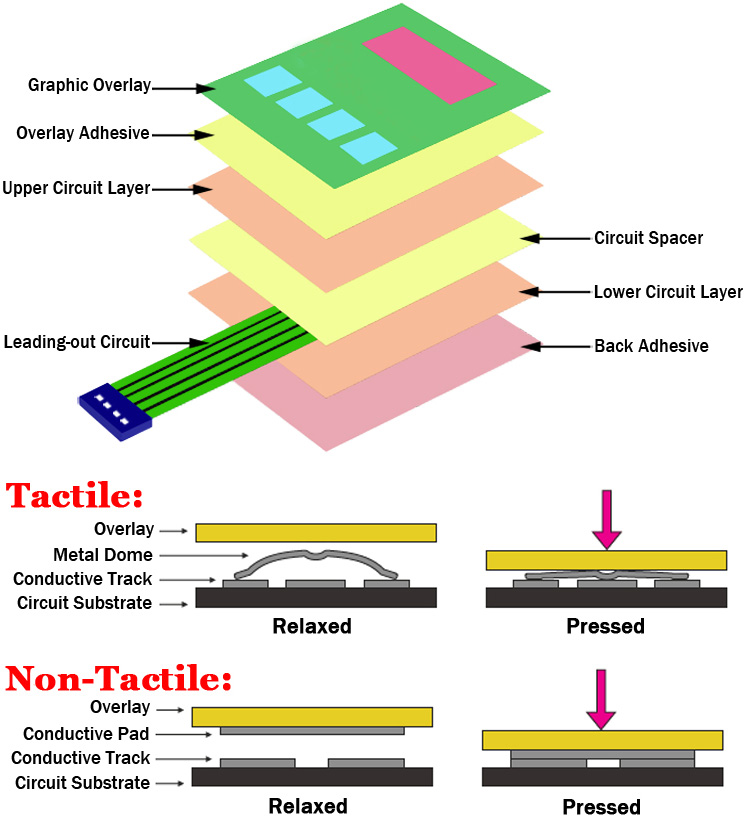Recognizing the Importance of Membrane Layer Switch in Modern Electronic Devices
Membrane buttons are important parts in modern electronic gadgets. They provide a mix of performance and style that improves individual interaction. Their sturdy and lightweight nature makes them ideal for different applications. As sectors develop, the need for modification and advanced attributes expands. Recognizing just how membrane changes contribute to technology reveals their value fit the future of electronic devices. What lies in advance for this innovation?
The Essentials of Membrane Switch Technology
Often forgotten, membrane layer switch technology plays a necessary function in the contemporary electronic devices landscape. These gadgets, composed of numerous layers, act as user interfaces for numerous digital items, ranging from household devices to clinical tools. A normal membrane layer button consists of a graphic overlay, a spacer layer, and a circuit layer, which are meticulously set up to develop a useful interface.When pressure is put on the overlay, the circuit layer is finished, allowing signals to be transmitted to the gadget. This technology is known for its adaptability, making it possible for modification in shape, style, and capability to fulfill details individual requirements. In addition, membrane buttons are slim and light-weight, making them ideal for applications where space is a premium. Their toughness and resistance to environmental variables better enhance their charm, guaranteeing they can hold up against harsh conditions while preserving capability. On the whole, membrane layer button modern technology is integral to creating straightforward and reliable digital tools

Key Advantages of Membrane Switches Over
Membrane switches deal a number of vital benefits that make them a favored option in various digital applications. Their style allows for a portable type variable, allowing manufacturers to develop light-weight and sleek tools. Additionally, membrane layer buttons are resistant to dust, moisture, and chemicals, which boosts their durability and durability in requiring settings. The tactile feedback given by these switches can improve individual experience, making them easy and user-friendly to operate.Furthermore, membrane switches can be tailored with diverse graphics and colors, permitting special branding opportunities. The manufacturing procedure is typically cost-efficient, especially for high-volume production, as it lowers assembly time and streamlines layout. Lastly, membrane changes call for minimal maintenance, adding to lower general functional expenses. These benefits emphasize their expanding popularity in modern-day electronics, where dependability and straightforward interfaces are necessary.

Applications Throughout Different Industries
The adaptability of membrane switches over enables their widespread adoption throughout different industries. In the clinical area, they are typically made use of in diagnostic equipment and person monitoring systems, offering a durable interface resistant to contaminants. The automotive sector uses membrane layer buttons for dashboard controls, improving user experience with smooth designs that hold up against extreme problems. In consumer electronics, they act as control panels for gadgets such as microwaves and coffee manufacturers, giving an user-friendly user interface that is very easy to clean. The aerospace market employs membrane switches in cabin controls, where reliability and room efficiency are extremely important. Furthermore, the commercial sector leverages these switches in machinery and control systems to guarantee durable procedure in requiring environments. This broad variety of applications underscores the flexibility of membrane switches, making them essential parts in improving capability and user interaction throughout varied technical landscapes.
Customization and Design Adaptability

Future Trends in Membrane Layer Change Advancement
Emerging trends in membrane switch development indicate an expanding focus on improved performance and combination with wise technologies. As consumer need for extra innovative electronic devices increases, producers are focusing on developing membrane layer changes that not only offer standard functional functions but additionally integrate functions like touch level of sensitivity, backlighting, and haptic feedback.Furthermore, improvements in products are expected to enhance toughness and environmental resistance, making membrane layer changes appropriate for diverse applications in industries such as medical care, automotive, and customer electronic devices. The assimilation of capacitive touch modern technology is most likely to come to be much more widespread, enabling sleeker layouts and enhanced user interfaces. membrane switch.Additionally, the surge of the Web of Points (IoT) is prompting the development of membrane layer changes that can interact wirelessly with various other devices, enhancing interconnectivity. Generally, the future of membrane layer switch modern technology appears appealing, driven by advancement and the pursuit of user-friendly options
Frequently Asked Concerns
Just How Do Membrane Layer Switches Contrast to Traditional Mechanical Switches?
Membrane layer switches, being much more space-efficient and offering a sleek style, contrast with traditional mechanical switches that supply tactile responses. The previous often this article include personalized graphics, while the latter normally guarantee longevity and integrity in different applications.
What Materials Are Typically Utilized in Membrane Layer Switch Manufacturing?
Membrane layer switches are normally produced using materials such as polyester, polycarbonate, and published conductive inks. These materials offer versatility, durability, and responsiveness, making them appropriate for different applications in digital devices and customer interfaces.
Can Membrane Switches Be Repaired or Recycled?
Membrane layer buttons can often be fixed, particularly if small concerns develop, such as adhesive failure or surface damage. Nonetheless, full reuse is usually limited due to put on and prospective deterioration of materials over time.
Just How Do Ecological Variables Influence Membrane Switch Over Efficiency?
Ecological aspects, such as temperature, direct exposure, and humidity to chemicals, substantially influence membrane button performance. Extreme conditions can result in degradation, impacting responsiveness and longevity, eventually jeopardizing the functionality of the gadget in various applications.
What Is the Normal Lifespan of a Membrane Change?
The regular lifespan of a membrane layer switch typically ranges from 1 to 5 million actuations, relying on factors such as usage frequency, environmental problems, and the products used in production, influencing resilience and efficiency longevity. A normal membrane layer switch is composed of a graphic overlay, a spacer layer, and a circuit layer, which are thoroughly constructed to create a practical interface - membrane switch.When pressure is applied to the overlay, the circuit layer is completed, enabling signals to be sent to the gadget. The responsive comments given by these buttons can improve customer experience, making them intuitive and simple to operate.Furthermore, membrane layer buttons can be tailored with varied graphics and shades, enabling for special branding opportunities. As consumer demand for much more advanced electronic gadgets rises, producers are focusing on creating membrane switches that not only offer basic operational duties however additionally incorporate attributes like touch level of sensitivity, backlighting, and haptic feedback.Furthermore, advancements in products are anticipated to boost longevity and ecological resistance, making membrane switches over suitable for varied applications in markets such as health care, auto, and customer electronics. The integration of capacitive touch technology is likely to become more widespread, permitting for sleeker designs and boosted customer interfaces.Additionally, the increase of the Internet of Points (IoT) is triggering the advancement of membrane switches over that can interact wirelessly with various other gadgets, enhancing interconnectivity. Membrane layer switches, being a lot more space-efficient and using a you can try here smooth design, comparison recommended you read with typical mechanical buttons that supply tactile responses
Comments on “Membrane switch in consumer electronics: user experience considerations”